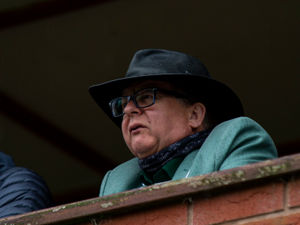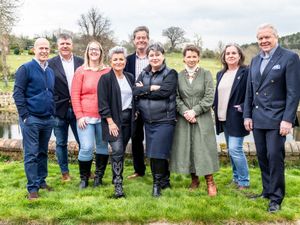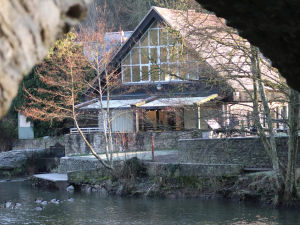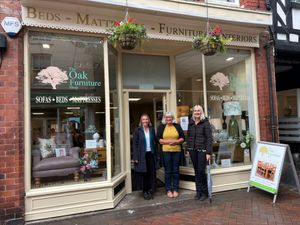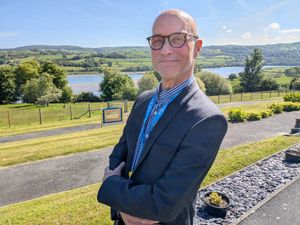Why we should revere links to Wilfred Owen
I was excited to read in last week's Chronicle that our town's links with the great First World War poet Wilfred Owen are to be celebrated in a new short film by local historian Doctor Nigel Tinsley.
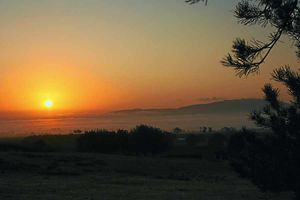
Yeah, we know Owen was born in Oswestry, but he and his family lived in Shrewsbury for several years and knew the town well.
So although we cannot, hand-on-heart, claim him as one of Shrewsbury's sons, I reckon we can at least share him with Oswestry.
Dr Tinsley is to explore the little-known aspects of the town's Edwardian history in the movie and said the time was right to commemorate the poet's connection with Shrewsbury.
He said: "With the centenary of the Great War only months away I think it's probably the right time for the town to give more attention to its most famous poet."
Well, absolutely.
The film is to feature well-known landmarks including the Statue of Hercules in The Quarry, St Julian's Church and Haughmond Hill – all favourite spots for Wilfred Owen.
The poet was born at Plas Wilmot in Oswestry in 1893, but his family moved to Shrewsbury in 1897 where they lived in Canon Street for three years. The family then moved to the Wirral before returning to Shrewsbury in 1910 – when they lived in Mahim, a three-storey house on the Monkmoor Road.
The house will feature in the new film, along with other sites including Shrewsbury Railway Station where Wilfred's father Tom Owen worked as line superintendent.
Wilfred was killed in action just seven days before the end of the war in 1918.
I've always felt Shrewsbury doesn't do enough to celebrate its links with Owen. Come to that, it doesn't really do enough to celebrate its links with Charles Darwin either.
Nor Admiral Benbow, nor Clive of India, nor Lord Hill, come to that.
And the novelist Mary Webb surely deserves greater recognition in the town too.
But perhaps much of this will be put right with the opening of the new super-duper museum at the Music Hall. Let's hope so. Anyway, talking of Wilfred Owen and the Edwardian era in which he grew up.
What a fascinating period of British history that was.
Which reminds me that a huge Edwardian fair could be staged in the centre of Shrewsbury to mark 100 years since the outbreak of the First World War.
Officials from the Western Front Association met in Shrewsbury earlier in the year to discuss ideas for how the town could commemorate its fallen soldiers during next year's centenary.
Ken Bishop, a member of the St Michael's War Memorial Conservation Group, who helped to organise the visit, said one idea was to hold a traditional Edwardian fair in the centre of Shrewsbury on the 100th anniversary of the outbreak of the Great War. The fair would therefore be staged on August 3, 2014.
He said local traders would be encouraged to dress in traditional costume for the event, which would also feature a collection of Edwardian photographs taken in Shrewsbury around the outbreak of the war.
Okay, strictly speaking, if we take the Edwardian era to mean the reign of Edward VII, that would be 1901 to 1911, but broadly speaking it is seen as the years running up to the First World War.
And if we're not going to nit-pick about whether Wilfred was an Oswestry man or a Shrewsbury man, then let's not nit-pick either about the exact definition of the Edwardian period.
The traditional fair sounds like a grand idea.
Mr Bishop said he hoped hundreds of people would attend the fair – to commemorate the sacrifice made by local soldiers.
"At the St Michael's Street memorial alone, 72 men who lost their lives are remembered, meanwhile in Castlefields there are another 70 men remembered," he said.
"That gives an idea of the scale of loss across the whole town and we need to remember their sacrifice."
Around 30 members of the Western Front Association, based in the West Midlands, met members of the St Michael's War Memorial Conservation Group at Shrewsbury Castle back in March.
They were given a talk on the town's First World War history as well as a tour around the Shropshire Regimental Museum. This was followed by a guided tour around Shrewsbury.
I do hope the idea of a traditional fair takes off.
Anyone interested in getting involved in next year's commemorations should contact Mr Bishop on (01743) 363098.
Meanwhile, the Wilfred Owen Association, can be contacted through its website: http://www.wilfredowen.org.uk/home/

